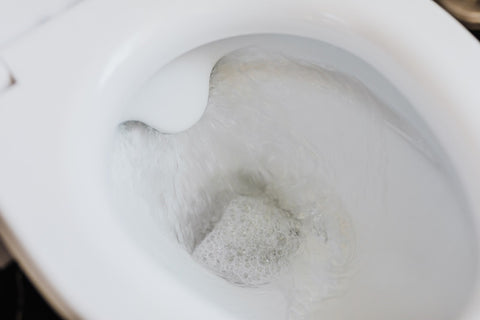
Constipation Relief: Make Your Own Enema at Home
Rundown
An enema is a procedure of cleansing the colon by administering a liquid solution. Primarily, its purpose if to soften bowels to help eliminate them successfully
Enemas are basically administered to assist in treating constipation. Enema administration begins by filling a small container with an enema solution, like soap suds, and injected into the rectum gently squired it into the rectum using a safe and sanitized nozzle. This procedure assists in softening and clearing hard bowels.
When it comes to treating constipation, enemas are usually the final course of action due to the potential side effects. Performing enemas at home is believed to be safe only when using safe types of enema solutions and a sanitized enema kit. However, many home enema methods aren’t really advised to be done at home.
In this article, we are doing to share the enemas that are safe to use in the comfort of your home, as well as the proper enema administration, and alternative practices for treating constipation.
Constipation: Using home enemas
Are you wondering if making enemas at home by yourself is challenging?The truth is, all you have to prepare is the enema solution and the tools.
Important reminder: If you are not sure with what enema solution to use and you do not have the right tools for administering enemas, avoid attempting to do it yourself.
Here are at least 3 things you need to know before performing an enema at home:
- In a bowl or cup, pour in 8 cups of hot and distilled water. The temperature must be around 105°F and 110°F.
- Mix in less than 8 tbsp of mineral oil, iodized salt, or Castile soap into the water. Take note that too much salt or salt may cause irritation. Too much soap or salt can irritate your bowels. It is best to ask a doctor to know how much ingredient you can safely use.
- Prepare a sterilized and high-quality enema kit and carefully administer the solution to yourself.
In case you choose to use mineral oil, make sure to use a natural one.
Where to buy a safe and high-quality home enema kit?
High-quality home enema kits are available at various health stores. Each enema kit comes with all the tools you need for performing home enemas, including the tubing, the bag, and the cleansing solution. It is best to purchase these types of enema kits instead of creating your own at home.
If you are interested in purchasing a kit, check out these enema kits:
Home enemas: How safe is it?
As long as you use clean tools and a safe enema solution, home enemas are known to be safe.
However, it is important to note that enemas may generally cause various symptoms, including dehydration and nausea. It may also impact your natural electrolyte balance. If you haven’t consulted a doctor first, do not attempt administering enemas by yourself.
Precautions are necessary to avoid potential complications or side effects or complications.

Before trying home enemas, here are a few important reminders:
-
There are a few chemicals that may cause negative reactions in the colon
In one case study in 2017, two children suffered from colitis (colon inflammation), together with vomiting and diarrhea after having a homemade enema consisting of hydrogen peroxide. Suffering from this type of negative reaction may take at least 8 months before complete recovery happens.
-
There are “natural” enemas, such as coffee or citrus, that may cause more negative results than positive ones
Because there are only a few scientific studies that prove the benefits of these ingredients for enemas, the results may not be always good.
For instance, the mixture in coffee or citrus may irritate the balance of gut bacteria in your gut. As a result, complications may be experienced, including bacterial infections and rectal irritation. On rare occasions, even death.
If you haven’t consulted a medical expert, do not try these types of natural enemas.
-
Improper use of tools or using tools that haven’t been sterilized may result in threatening complications
Improper use of tools may harm your rectum, anus, or even the lower colon.
Tools that haven’t been sterilized can be filled with bacteria and cause serious infection.

Medical substitutes
When it comes to an enema procedure, it is always advised to ask a doctor to help. Using alternative treatments that assist in softening stool or deal with persisting constipation is also recommended.
Instead of administering the traditional enema, some of the medical alternatives a medical expert might use are:
- Probiotic enemas are powerful in balancing your gut bacteria and preventing digestive disorders.
- Certain laxatives, such as bisacodyl, are effective in stimulating a bowel movement.
- Using foley balloon enemas for opening up the rectum and lower colon help move the bowel movements smoothly through the
- For those who are suffering from ulcerative colitis or IBD (inflammatory bowel disorder), medications such as mesalamine (Rowasa) is a great treatment.
Step-by-step guide in administering a home enema:

If you are planning to administer an enema at home, follow these instructions:
- To avoid dehydration, drink at least two glasses of water before you begin.
- Using an enema in an empty bathtub is ideal. If a bathtub is not available, you can put down a towel on the bathroom floor.
- Get the clean enema bag and fill it with your salt, soap, or mineral oil solution.
- See to it that the enema bag is tightly sealed to avoid leak.
- Once the hose is pointed downwards, let go of the clamp slowly to release excess air. DO not skip this step because injecting air into the colon may result in bloating, gas, and na
- Place the enema bag on the side of the floor or the bathtub. As it drains, you can clearly see the amount of solution left,
- To insert the tube easier, a safe lubricant is recommended.
- Lie down on the bathtub or the floor. Make sure that your knees are raised to the same level as your chest.
- Carefully insert the tube up to 3-4 inches into your rectum. In the process of insertion, try your best to relax your muscles.
- Take some time so that the fluid can drain into your rectum. Until the enema bag isn’t empty, relax and take deep breaths.
- Take out the tube from your rectum slowly.
- Stand up and sit on the toilet immediately if you feel like having a bowel movement.

Conclusion
Before attempting to administer enemas or try gut cleanses, it is best to consult your doctor first.
Improper enema administration may result in injury to your rectum, anus, or colon.
Tools that are not properly sanitized impose a risk for introducing bacteria or causing negative reactions in your colon.
Precautions are necessary before you attempt to perform an enema procedure by yourself. See to it that your tools are clean and the solution is safe. Then follow the step-by-step guide carefully.











